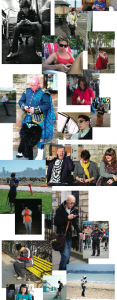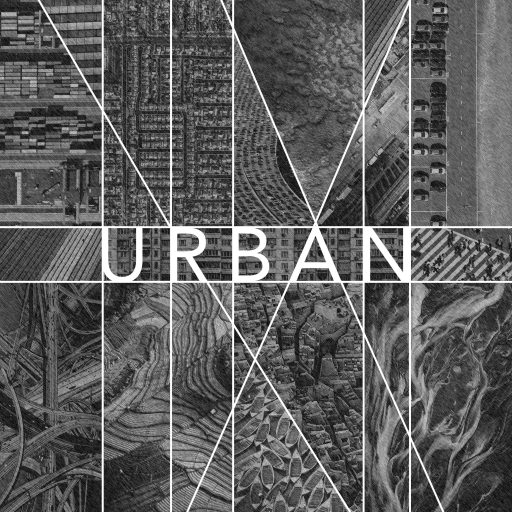 In an online discussion, CCCP student Albert Lopez philosophizes with friend Tom Haviv about technology’s increasing weight–for better of worse–in the physical social realm.
In an online discussion, CCCP student Albert Lopez philosophizes with friend Tom Haviv about technology’s increasing weight–for better of worse–in the physical social realm.
Albert Lopez:
With the emergence of digital technology as a community-building tool during the last decade, actions in the digital world are increasingly effecting changes in the physical world. A website once used to organize college house parties is now being partially credited by the media and scholars for its effects on the recent string of popular uprisings throughout the Middle East and North Africa. Though the impact these tools have had on these revolutions is still being analyzed, it is becoming an accepted fact that digital access will continue to aid in the democratization of spatial and structural organization.
What we do not know, however, is how the concept of democracy itself will evolve in this age of virtual connectivity that continues to make “freedom of expression” a reality, rather than an abstract concept.
Tom Haviv:
Instead of democracy, I would instead call it anarchy, since “democratization” of information seems to imply responsibility, centrality and a social good.
Moreover, the horizon-less field of data-generation — information’s anarchization — has unpredictable results. The mere pinprick of attention can inspire a wave of hundreds of thousands of hits by going “viral” on YouTube. Yet viral thinking has its limits: it lacks the imperative to galvanize transformative action within our real, lived communities.
We are filled with anticipation over the promise of social networks. This anticipation stems from this mystery: the amount of time we spend on Facebook is disproportionate to the material or emotional rewards it produces and arguably less than our experiences in the physical world. Facebook becomes a life-sap.
To remedy this is to create a social networking platform that recognizes — even exalts — our physical communities. I would propose a geography-based community-networking platform that helps us reconcile, with greater accountability, the virtual and the physical.
AL:
You bring up an excellent point here by mentioning that users spend a good deal of time entertaining themselves on the Internet. Though entertainment in itself can, at times, have a productive purpose, more often than not it is used as a diversion.
Stemming from this is the question of democratization (or anarchization) for whom? This problem is particularly salient as we analyze who is utilizing these online tools to restructure their spatial and political environments. For instance, to what degree has recent development been the product of an empowered or simply a hyperactive and digitally savvy community?
Previously, the economically and socially disadvantaged fell on the other side of the digitally empowered divide due to a lack of access to hardware, and later, connectivity. With the increases in mobile internet use, it’s questionable whether this is still the case. According to a July 2010 poll by the Pew Foundation, 51% of Latinos and 46% of blacks are using their phones to access the Internet, in comparison to only 33% of whites; communication by email and the access of social media via phone is also significantly higher in these groups.
In other words, minority groups hold the potential to become the largest productive force in both digital and physical space. But whether this has more to do with cell phones facilitating more distracting uses and the continued barriers to owning more expensive — and productive — hardware like a laptop remains to be seen.
TH:
Connecting historically marginalized groups should be an essential goal of a geographically-based online network oriented toward local community engagement.
In this imagined network, users would be able to collectively identify points of civic failure and evaluate relations within geographic space by divulging a matrix of contingencies and cultural multiplicities. A complex identity may form, one that resists superficial “hometown tagging” and cruder forms of territorialization, such as unilateral gentrification and wall-building.
AL:
Its potential as a tool for unification and the breaking of existing social barriers is perhaps the key to its success, not only across neighborhoods and classes, but also within the divisions that exist in these marginalized groups themselves. Arguably, by blurring lines between the intercultural differences that exist within the larger ethnic groupings, as well as the making visible of similarities that they possess will aid in the union of a common culture, or at least a more fruitful dialogue between the distinct cultures.
There still exists a threat that perverts this potentially liberating system and could ultimately lead to a sort of herd mentality where a group resorts to indirect representation of its most intelligent or cunning member. Education, the politicization and the digitalization of this growing body of users must inform their social-physical action to produce the abundance of good fruit that the virtual tree has been prophesied to bear: a more active citizenry.
TH:
Today, we need a conscious reevaluation of the qualitative. Oral histories of daydreams and spatial discomfort may lay the groundwork for communal upheaval. Affect and emotion foment change. To collect, and share, the subjective experiences of local residents is to validate experience and encourage action. If the vocalizations of activists and casual worriers are metastasized in digital space: the psychology of a city may emerge.
By Albert Lopez & Tom Haviv

Leave a Reply